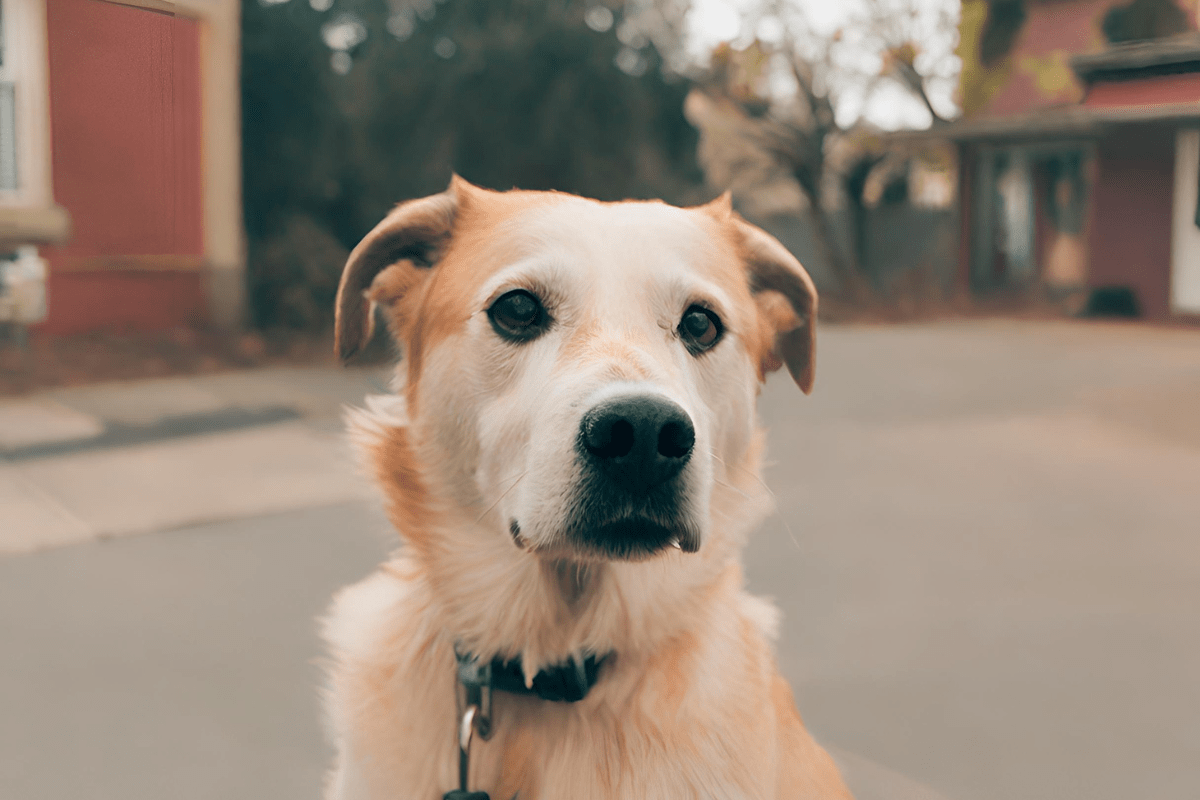One of the biggest fears for any dog owner is the possibility of their beloved pet getting lost or wandering off. This leads us to the question: Will a dog come back home on his own?
While dogs have a strong homing instinct, there’s no guarantee they will find their way back without assistance. Let’s discuss ways dog owners can ensure that they never lose their furry friends by learning a few safety tips along with the help of technology like GPS trackers.

Will a Dog Come Back Home on His Own?
We’ve all heard the heartwarming story of canine courage and resilience: Lost Dog Finds Way Back Home. Take the case of Bailey, a Texas dog who went missing from her new home. Bailey eventually found her way back to the shelter where she was originally adopted, which amazed shelter workers since that was a formidable 10 miles away from her new home.
Stories like Bailey’s serve as a testament to the unwavering bond between dogs and their human companions. It also highlights the importance of microchipping as a reliable means of reuniting lost pets with their owners.
The Homing Instinct
Dogs have an incredible homing instinct, which is a result of their keen sense of smell and an internal compass that allows them to navigate and find their way back to familiar places.
Dr. John Bradshaw, a renowned expert in dog behavior, explains, “Dogs have a remarkable sense of direction and a strong desire to return to their home territory. This is deeply ingrained in their genetic makeup, as their ancestors relied on this ability for survival.”
However, the homing instinct alone is not foolproof. Several factors can influence whether a lost dog will find its way home.

1. Distance and Familiarity
The distance a dog has traveled from home plays a big role. If they only wander a short distance from home in a familiar area, there’s a better chance of them finding their way back on their own.
Dogs are even more likely to return if they recognize the landmarks and scents of their home turf.
2. Fear and Stress
Dogs that are lost or frightened may be disoriented and unable to use their homing instincts effectively.
Loud noises, unfamiliar environments, or encounters with aggressive animals can increase their stress levels, making it harder for them to navigate back home.
Take special heed during celebrations like the Fourth of July or thunderstorms that see a lot of dogs getting too spooked and running away.
3. Hunger and Thirst
The longer a dog is away from home, the more likely hungry and thirsty they become. This may lead them to scavenge for food in unfamiliar areas, which can take them even further from home.
4. Physical Condition
A dog’s physical condition also affects their ability to return home. Injured or sick dogs may not have the strength or stamina to make the journey back, even if they know the way.
If a dog has been out on the streets for some time, a check at the vet is always recommended to ensure that new illnesses are not brought back home.
5. Lost Scent Trail
Rain, wind, or time can all erode a dog’s scent trail, making it challenging for them to retrace their steps. This is especially true in urban areas with multiple scents and distractions.
Preventing Lost Dogs
While dogs have a natural homing instinct, it’s crucial for dog owners to take steps to prevent their pets from getting lost in the first place.
Here are some tips to ensure your furry friend stays safe:
Secure Fencing
Ensure that your yard has a secure fence to prevent your dog from wandering off. Regularly check for any gaps or holes that your dog could use to escape.
If you can’t put up a physical fence around your property, consider using an invisible dog fence. Just keep in mind that you’ll need to train your dog on how to use them first, and they don’t always work for super tenacious breeds.
Supervision
Always supervise your dog when they are outside, especially in unfamiliar areas. Dogs are curious by nature, and even the most well-behaved pets can be tempted to explore.
Training and Recall
Invest time in training your dog, including teaching them basic commands like “come” and “stay.”
A well-trained dog is more likely to respond to your commands and return when called.
Identification
Make sure your dog wears a collar with an identification tag that includes your contact information. Even better, if your city offers pet registration, do that.
Microchipping your pet is an additional measure that can help reunite you with your dog if they get lost.
GPS Trackers

GPS trackers have been a game-changer for dog owners. They allow you to monitor your dog’s location in real time and receive alerts if they leave a designated safe zone.
Whether you have a mischievous escape artist or a curious explorer, the advantages of investing in a GPS device are numerous:
Advantages of Using GPS trackers:
Real-Time Location Monitoring: GPS trackers provide accurate and real-time information about your dog’s whereabouts, allowing you to act swiftly if your pet wanders off.
Geofencing: Many GPS trackers offer geofencing capabilities, which allow you to set up virtual boundaries. If your dog crosses these boundaries, you’ll receive an immediate alert, helping you prevent them from getting too far away.
Historical Data: Some trackers store historical data, enabling you to track your dog’s movement over time. This can be valuable for understanding your pet’s behavior and identifying patterns. If you have a neighbor who is known for feeding strays, your dog might be there.
Peace of Mind: Most importantly, GPS trackers provide peace of mind to dog owners, knowing they can quickly locate their pets in case of an emergency. It’s a great investment if your dog is a former shelter dog.
Here are a few of our favorites to help you choose the best one for your dog:
Secure Doors and Gates
Be vigilant about keeping doors and gates closed and locked to prevent accidental escapes. If your home has several levels, consider securing those with dog gates. Using a baby gate instead of a dog gate might not be the best idea because they are usually not tall enough, and the bars might allow your friend to slip through easily.
Microchipping
Microchipping your dog is a permanent form of identification that can help reunite you with your pet if they end up at a shelter or veterinary clinic. A microchip is embedded under your dog’s skin, and shelter technicians routinely scan for it when a lost animal comes into their shelter.
Make sure to keep your contact information up to date in the microchip database. Some cities require microchipping; others just suggest it. My city requires registration for all pets, which includes an ID tag with a QR code. If my dog was ever lost, a person could just scan their collar for my telephone number. But that’s not fail-proof because collars can break.
More Ways to Keep Your Dog Home
Beyond physical measures such as fencing and good collars, here are a few more tips to help make sure Fido sticks close to home.
Exercise and Mental Stimulation
Give your dog plenty of exercise and mental stimulation. A tired dog is less likely to be tempted by the call of adventure beyond your property. I’ve seen too many anxiety-riddled TikToks of bored dogs scaling fences like child’s play.

Socialization
Socializing your dog with other dogs and people is crucial. A well-socialized dog is less likely to be fearful or anxious in unfamiliar situations, reducing the risk of running away when faced with something new.
Emergency Preparedness
Prepare for the worst-case scenario by having a recent photo of your dog and a detailed description on hand. This will be invaluable if you need to enlist the help of neighbors, animal shelters, or social media communities in your search. This is extremely important if you live in flood zones, tornado alley, or other area primed for disaster.
Neighborhood Awareness
Get to know your neighbors, especially those who also have dogs. They can be your allies in locating your pet should they go missing. Establishing a local network can make a big difference in your dog’s safe return.
If one of these neighbors sees your dog running wild in the streets, they can alert you quickly. If you’re on the shy side, at least join a network like NextDoor.com where you can immediately post a picture that can reach people faster than a flyer or knocking door-to-door.
Finding the Way Back Home
So to answer the question, “Will a dog come back home on his own?” the simple truth is that it depends on the dog’s familiarity with the area, stress levels, physical condition, and more.
While dogs have a remarkable homing instinct, it’s crucial for dog owners to take proactive measures to prevent their pets from getting lost. GPS trackers are a powerful tool in the effort to keep our furry friends safe.
These devices offer real-time location monitoring, geofencing capabilities, and historical data tracking, providing peace of mind to dog owners and increasing the chances of a safe return. Aside from GPS trackers though, responsible pet ownership includes securing your yard, training your dog, and ensuring they wear proper identification.
By combining these efforts with the use of GPS trackers, you can minimize the risk of losing your beloved companion and increase the likelihood of a quick reunion.

